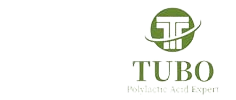Dear [Recipient’s Name],
I hope this message finds you well.
My name is [Your Name], and I represent [Your Company Name], a dedicated supplier of high-performance synthetic paper products, including DuPont paper. I’m reaching out to explore the possibility of a partnership that could help enhance your product line, improve customer satisfaction, and offer long-term value to your clients.
In today’s competitive market, more and more businesses are seeking materials that combine aesthetic quality with industrial-level performance—especially in areas like packaging, labeling, signage, and outdoor media. DuPont paper provides exactly that: a versatile, durable, and eco-conscious solution to meet modern market demands.
Why DuPont Paper?
DuPont synthetic paper is an advanced substrate engineered for performance. It offers a unique combination of:
Tear resistance – Withstands rough handling, folding, and outdoor exposure.
Waterproof & chemical-resistant properties – Ideal for industries such as food & beverage, cosmetics, logistics, and healthcare.
Superior printability – Compatible with offset, UV, inkjet, flexographic, and thermal printing without requiring additional coatings.
Eco-consciousness – Recyclable and designed to reduce waste over time.
In short, it has the appearance and feel of paper, but performs like plastic film—without the typical limitations of either material.
Product Applications
Whether you’re in packaging, labeling, printing, or branding, DuPont paper can serve a wide range of uses:
Product labels – Durable, smudge-free labels that survive moisture, oils, and temperature changes.
Hang tags & manuals – Elegant yet rugged solutions for fashion, electronics, automotive, and tools.
Outdoor signage – Weatherproof posters, maps, and signage that stay vivid and intact.
ID cards & certificates – Anti-tear, writable substrates that don’t require lamination.
Industrial & medical tags – Resistant to chemicals and friction, ideal for demanding environments.
Its flexibility also makes it an excellent substitute for laminated paper, PVC films, or coated substrates—saving cost and simplifying production.
Who We Work With
We currently serve clients across:
Asia-Pacific: Packaging printers and brand suppliers in Korea, Japan, and Southeast Asia.
North America & Europe: Retail label converters, logistics packaging specialists, and advertising print houses.
Middle East & Africa: Durable signage providers, government printing contracts, and industrial manufacturers.
Our partners appreciate not just the product, but our reliable lead times, technical guidance, and customizable service options.
What We Can Offer You
If you’re sourcing durable printing materials, we’d love to support your needs with:
Sample kits for quality testing
Flexible MOQ and competitive pricing for bulk and trial orders
Private label or OEM options
Consistent quality control and timely delivery
Experienced export team to handle shipping, documents, and declarations smoothly
We’re confident that DuPont paper can add measurable value to your current material portfolio—whether you’re upgrading existing products or launching new ones.
Let’s Talk
If you’re interested in learning more or testing samples, I’d be happy to arrange a call at your convenience. We’re looking to build long-term partnerships with like-minded companies who value:
Material innovation
Consistent supply
High customer satisfaction
Sustainable alternatives to conventional media
I’ve attached a brief product catalog and technical datasheet for your reference. Please feel free to review them and let me know your thoughts or specific needs.
Next Steps?
✓ Would you like samples delivered to your office for testing?
✓ Would you be open to a short video call next week to discuss your current sourcing challenges?
✓ Or is there someone else in your organization I should speak to?
Thank you very much for your time and consideration. I look forward to the opportunity of working together to create smarter, stronger, and more sustainable printed products for your market.
Warm regards,
[Your Full Name]
Sales Manager | [Your Company Name]
WhatsApp/WeChat: [Your Number]
Email: [Your Email Address]
Website: [Your Company URL]
Address: [Your Office Address]
